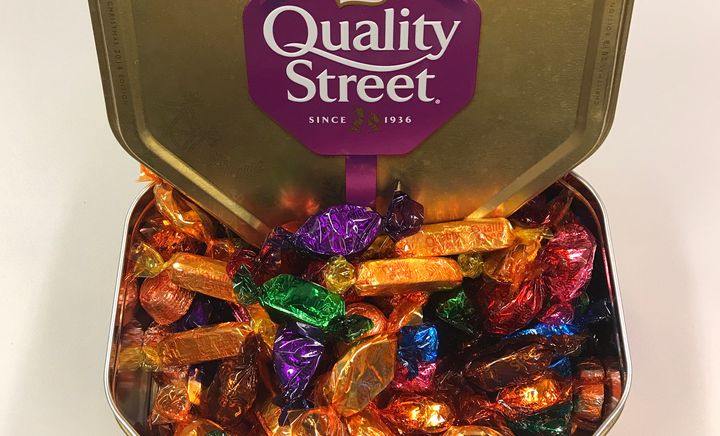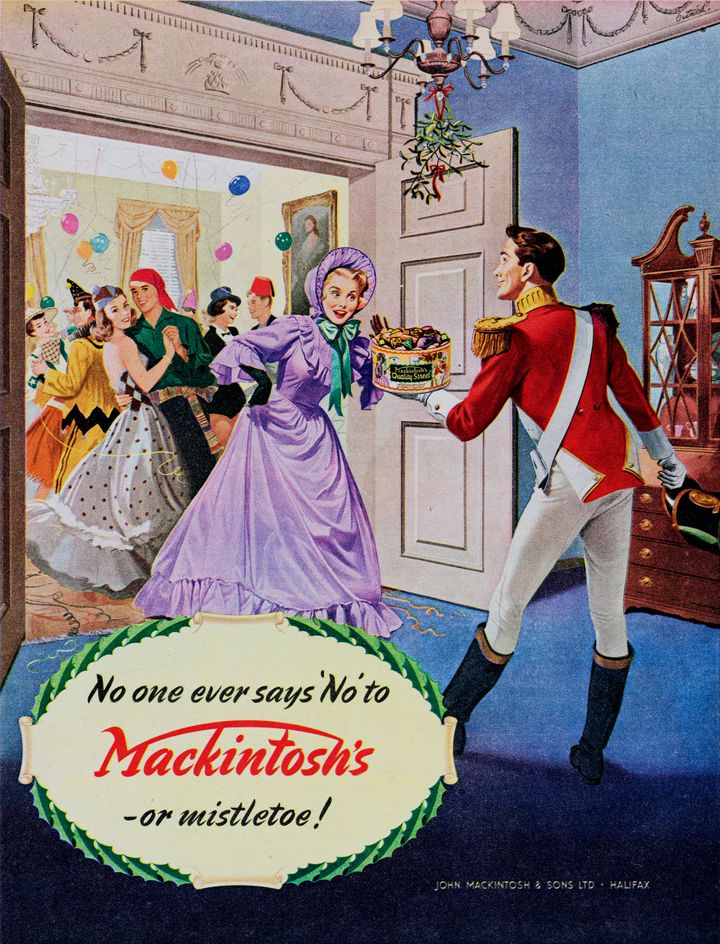
We’ve written before at HuffPost UK about why Jammie Dodgers, Twix, Hobnobs, and more are named what they are.
But what about Quality Street, the selection tin first made in 1936?
I kind of get the “quality” part of it ― the original selection of 11 chocolates and seven toffees was meant to invoke a “regal splendour,” Nestlé, who acquired the original company Rowntree Mackintosh in 1988, says on their site.
But what about the “Street” bit of the title ― and why did the original box have a Major and Miss on the lid?

The characters and the name are linked by a play
A peek at an archived Quality Street post reveals that the chocolates were first named after a James Matthew (JM) Barrie play of the same name.
“The two figures on the box were originally inspired by the two principal characters, Phoebe Throssel and Valentine Brown,” the site entry reads.
You might recognise JM Barrie as the author of Peter Pan.
The Scottish playwright first introduced the character in one of his novels, but Peter really soared when Barrie featured him in a play.
His play Quality Street was published in 1901 (35 years before Quality Street the selection box was launched) but was set in the Regency era.
So it’s no wonder Calderdale Museums says that “The design and branding of Quality Street was meant to evoke feelings of nostalgia for old fashioned ways and sentimental romantic imagery.”
The tin was always meant to be reused
You know that awful feeling of opening a selection box tin when you’re feeling snackish, only to realise there’s a sewing kit inside?
Well according to none other than Harold Mackintosh, who invented Quality Street, that’s what the tin is for.
Calderdale Maseums shared his instructions for the packaging, which went as follows: he demanded the tin be “most carefully designed… First and foremost as a practical container – one which is easy to serve from, occupying a minimum of room – and which will keep its contents in the best of condition.”
Secondly, he said it had to look distinctive and inviting ― but “Thirdly, [he wanted] a container that will be useful in the home and this will be a much sought after biscuit or cake tin.”
In other words, it was always meant to be reused ― though perhaps not for the tangled spools and loose pins we faced in our house. The more you know, right?